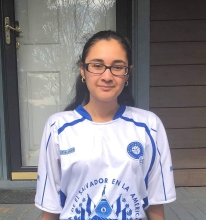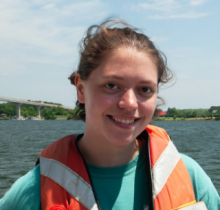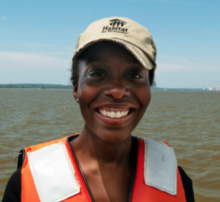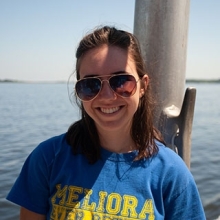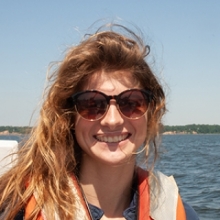Eight students will be presenting the summer work at the Ocean Sciences Meeting in March 2022!
Nathan Hirtle, Salisbury University
Class Year:
2016Mentor:
Hongsheng Bi, Ph.D.Project Title:
Examining the Spatial and Temporal Dynamics of Forage Fish between the Patuxent River and Saint Leonard’s Creek using High Resolution Sonar Imaging
Abstract:
Forage fish are important planktivorous prey species within the Chesapeake Bay for many of the larger fish, birds, and mammals that inhabit the estuarine ecosystem. However, little is known about the distribution of these fish between the rivers and creeks that feed the Bay. A maximum of five transects were performed during each of two cruises, two in the Patuxent River and three in Saint Leonard Creek, where sonar data recorded fish abundance in the water column, which were then counted and paired with GPS data to provide a dataset with high spatial resolution, allowing fish abundances to be compared in and between transects, as well as between the creek and the river. Qualitatively, the forage fish prefer the creek to the river because of the abundant source of plankton as well as the lower risk of predation from larger piscivorous fish species. However, large schools of forage fish may prefer the river due to mobility. The sea nettle Chrysaora quinquecirrha may also impact forage fish spatial habits, but this data has not been analyzed yet. Future research includes this data, as well as examining the fish abundance at a higher temporal resolution to see more conclusive trends.
Presentations:
Hirtle, N.*, K. Lankowicz, S. Shahrestani, H. Bi, and C. Fan. 2017. Spatial and temporal abundance of forage fish in the Patuxent River . ASLO Aquatic Sciences Meeting, Honolulu, Hawaii .











